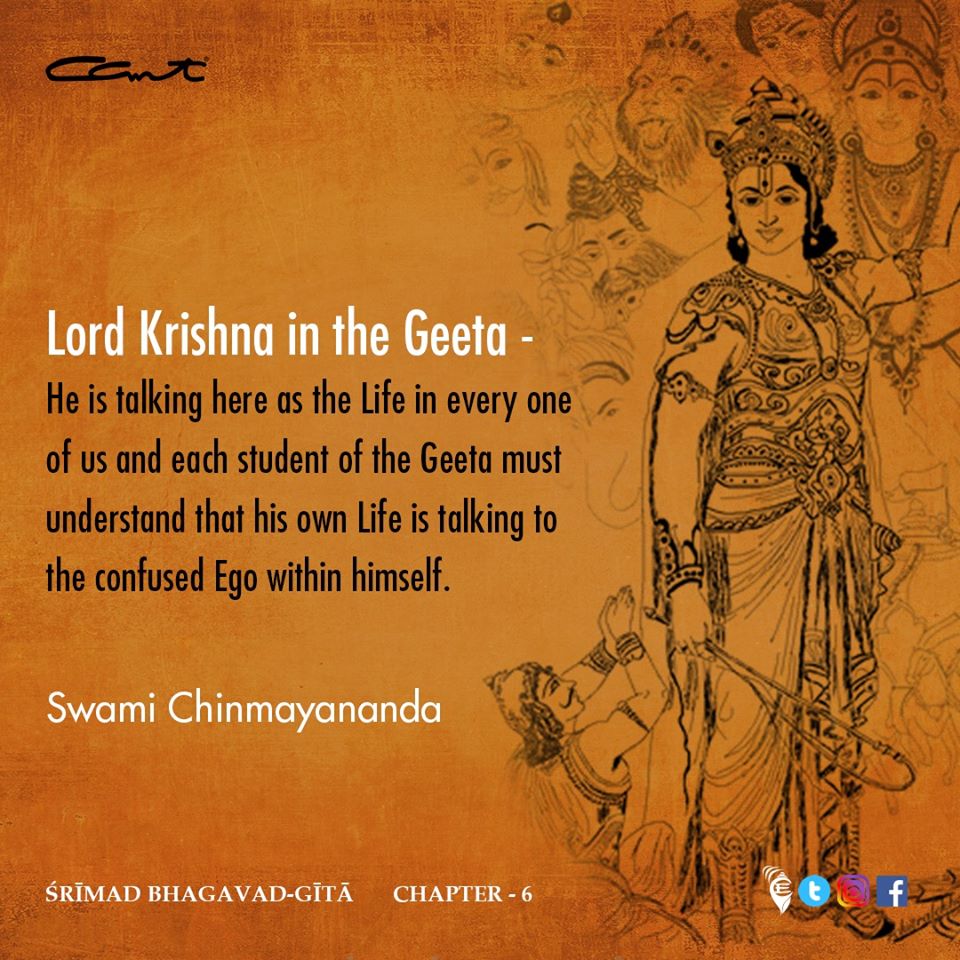The Teachings of the Bhagavadgita - 8.6. Swami Krishnananda.
----------------------------------------------------------------------------------
Thursday, April 29, 2021. 11:04. AM.
Chapter 8: Creation and Life After Death -6.
-----------------------------------------------------------------------------------
1.
A very homely and easily intelligible analogy that I may place before you to understand this interconnectedness is the organism of our own personality, the sarira, which is the illustration given by such theologists and philosophers like Sri Ramanuja. God is sariri, and the whole creation is sarira. The relationship between the universe and God is sarira-sariri-sambandha. What is the relationship between the body and the soul?
There is some sort of a very clear, intelligible relationship between the body and the soul, though we may not identify one with the other. The body is not the soul, but we cannot keep the body here and the soul there; they are so much related that even the word 'relation' is a poor word to describe what sort of association is there between the soul and the body. They are one, as it were, yet they are not one. A kind of non-separate existence is enjoyed by the soul and the body, notwithstanding the fact that we cannot say that the one is the other.
This is, perhaps, the viewpoint of Ramanuja – the theologians who hold that the universe is organically related to the Supreme Being, call Him Vishnu, Narayana, Brahma, Vishnu, Siva or the Supreme Being, or any name we would like. I do not wish to stretch this point too much to the breaking apotheosis of it, and for all practical purposes it will be enough for us to know that there is a non-separate relation of the whole of creation with God, which includes our relationship also. The words adhidaiva, adhyatma and adhibhuta are interpreted, as I mentioned, in many ways. In a subtle way, the Bhagavadgita itself gives the definition of these principles.
2
Akshara brahma paramam (Gita 8.3) – the Imperishable Eternal is the Supreme Brahman, the Absolute, Creator Supreme, the Infinite Eternal. This is Brahman, in Sanskrit language. Brahman is the total, all-comprehensive Absolute-Being, aksharam, and it is imperishable – svabhavo'dhyaatmanuchyate. Here, interpreters differ from one another in what they mean by the terms 'svabhava' and 'adhyatma'. Adhyatma is the pryatyak chetana or the internal consciousness, the subjective awareness we may say, literally understood. Svabhava is natural disposition.
The natural disposition of a being is the adhyatma or the subjectivity of that being. I am giving you a non-committal definition without going into the details of it because you can read any meaning into them according to your theological standpoints, or rather, philosophical predispositions. Or more properly, to make it more clear to you as novitiates in this study, we may say that adhyatma is the individualised consciousness – consciousness locked up in the individuality of the person, which is the determinant of our svabhava, and which decides our svadharma also.
Our duty as svadharma will be decided by our svabhava, or our essential nature as adhyatma, the individual principle in a particular location in the scheme or stage of evolution, a point to be underlined.
To be continued ...
=========================================================================





Comments
Post a Comment